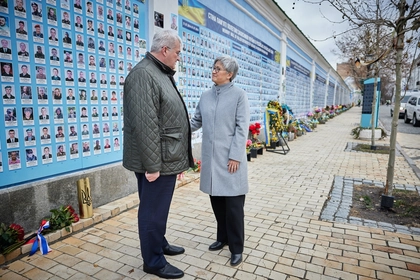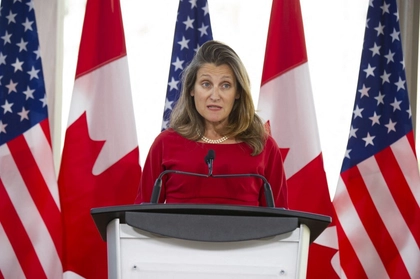The Russian Ministry of Defense’s TV channel, TVZvezda reported a new batch of T-90 tanks being transported by train from Uralvagonzavod, Russia’s main tank manufacturer. It was noticeable that the vehicles were equipped with reinforced rubber mats covering the gap between the tank’s turret and hull as well as over the rear engine louvres. It is claimed this is the latest anti-drone measure installed by the manufacturer.
For more than a century the tank dominated the battlefield but during the war that was sparked by Russia’s 2022 full-scale invasion that position of dominance has been usurped by tank killing drones, with some sources claiming first-person view (FPV) drones now account for as many as two-thirds of Moscow’s tank losses.
This has led to both Russian and Ukrainian military commanders searching for countermeasures to the threat from FPV drones, which continue to become increasingly effective through technological improvements with larger payloads, at the hands of increasingly skilled pilots.
JOIN US ON TELEGRAM
Follow our coverage of the war on the @Kyivpost_official.
Technological innovation to protect tanks and other armored vehicles has tried to respond, but with mixed results; often the solutions adopted have created even more issues and vulnerabilities that the drone operators or conventional attackers are able to exploit.
Initial countermeasures were aimed at preventing the drones’ explosive payloads from breaching the hull by causing them to activate early at a distance from the tank.

Australian Foreign Minister Visits Kyiv, Confirms Reopening of Embassy
First, they used cages to protect tank turrets where the armor was thinnest, eventually enlarging and extending these “cope cages” to cover and surround the whole tank. They may have reduced the initial effect of a drone strike but at the cost of limiting the tank crews’ observation and use of the main armament. There have also been many videos and images of burning Russian tanks equipped with protection cages on social media.
A Russian military spokesperson gave an explanation for this: “During operations, these metal structures become deformed, break, and lose their protective properties.”
The next phase since early April was to replace or reinforce the defense provided by the cages with solid metal boxes to protect them from drone strikes – so called “turtle” or “barn” tanks. Once again, the level of improved protection came with negative impacts on the tank as a weapon.
At the same time as this improvised secondary armor was being used, attempts were being made to mount electronic warfare (EW) countermeasures equipment on Russian tanks, such as the Volnorez (Breakwater) and Arena-M counter-drone systems.
The Volnorez works by emitting radio frequency (RF) interference disrupting the control signals between the drone and its operator, forcing it to either land or hover in place until it is brought down, or its battery fails. The Arena-M is an active protective system that launches one of its 26 on-board interceptor projectiles if a threat traveling at between 240 and 2,400 kph (150-1,500 mph) approaches within 50 meters (160 feet) of the tank.
It is known that the latest Ukrainian drones incorporate artificial intelligence (AI) and other technologies that overcome the effects of jamming and increasingly allow the FPVs to operate independently of the operator if the link is interrupted.
The reliability of these systems is one issue, but more concerning, from the Russian tank crews’ perspectives, is the lack of availability and cost of the systems. Ukrainian military analyst Oleksandr Kovalenko not only questions the capability of the systems but says, “if every tank, every personnel carrier, and every infantry fighting vehicle was guarded by [these] devices, the Russians would not have the time or resources to produce all of those it needs.”
The rubber mats seen on the new T-90s is an attempt to produce a cost effective, easily fitted and, from the tank crew’s perspective, and workable solution. It remains to be seen how effective the mats will be in their main aim, and their ability to withstand the wear and tear of day-to-day operations and use is even more questionable. It seems more likely that they will give confidence and boost the morale of the tank crew rather than maximize their chances of surviving a determined FPV drone strike or multiple strikes.
You can also highlight the text and press Ctrl + Enter






